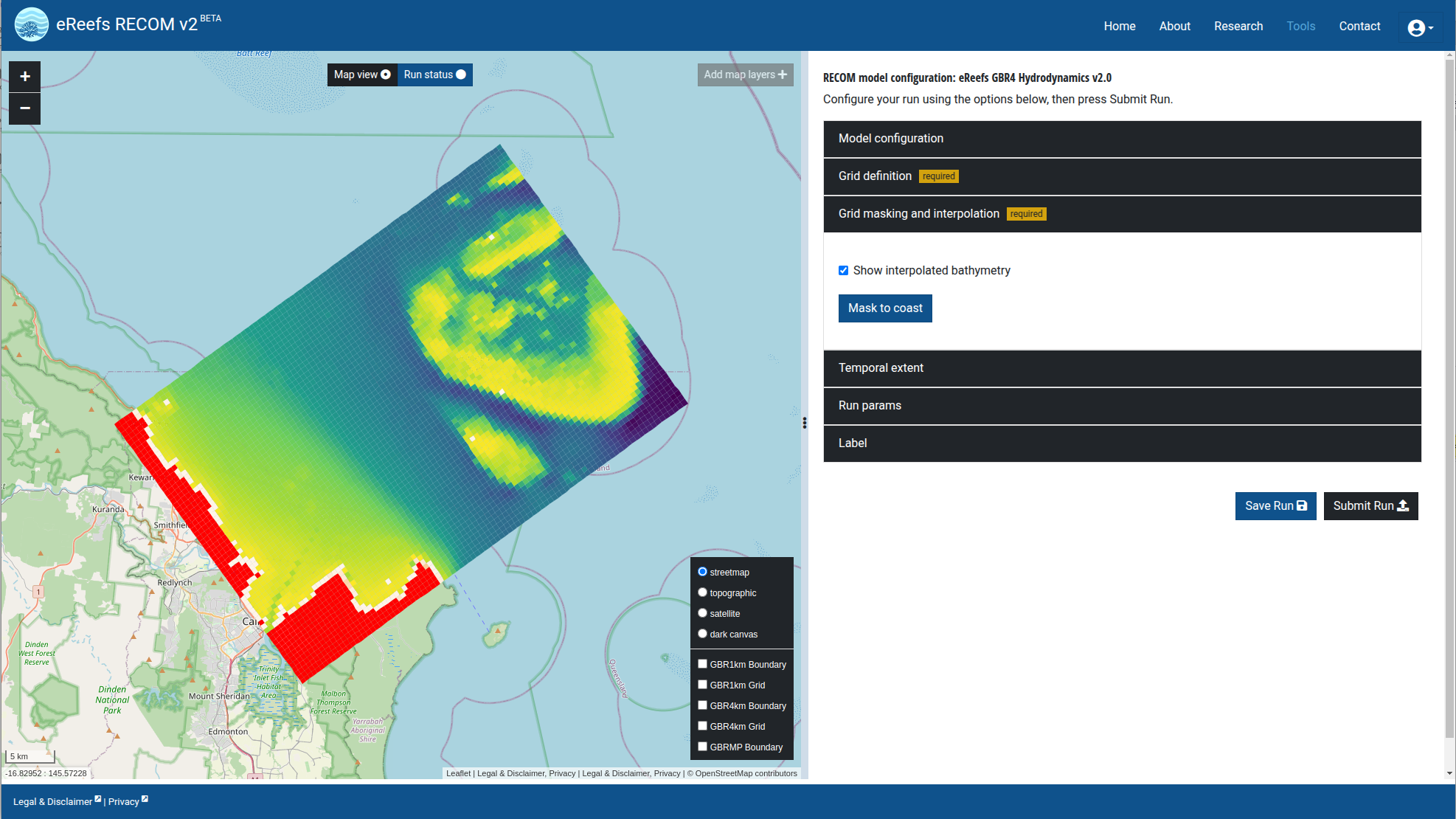The RElocatable COastal Model (RECOM) is an interactive web based modelling tool developed by CSIRO. It allows users to define a fine-scale resolution grid in a local area of interest and is driven by the larger scale GBR4 and GBR1 models. It is full featured in terms of running the hydrodynamics, sediment transport and BGC models. Custom data, such as bathymetry, coastlines and flow data may be supplied by the user. The higher resolution (~100’s of m) of the grids enables the model to capture more of the local dynamics that may be missing from the broader regional models.
In the previous eReefs project, it has mostly been used as an offshore downscaling tool. Here are some previous applications of RECOM
The current phase of eReefs aims to extend RECOM to nearshore coastal and estuarine applications, with the ability to define the riverine features more accurately.
